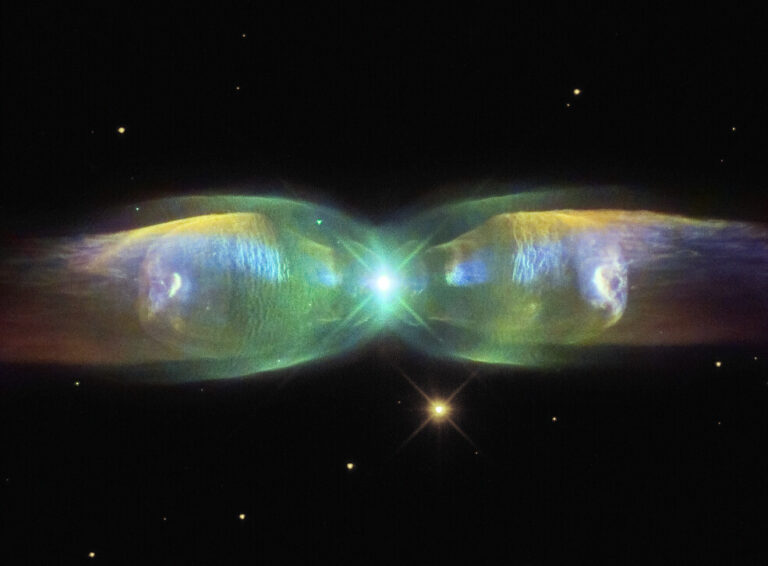M2-9:蝴蝶星云的翅膀
2020年9月13日 M2-9: Wings of a Butterfly Nebula Image Credit: Hubble Legacy Archive, NASA, ESA – Processing: Judy Schmidt Explanation: Are stars better appreciated for their art after they die? Actually, stars usually create their most artistic displays as they die. In the case of low-mass stars like our Sun and M2-9 pictured here, the stars transform themselves from normal stars to white dwarfs by casting off their outer gaseous envelopes. The expended gas frequently forms an impressive display called a planetary nebula that fades gradually over thousands of years. M2-9, a butterfly planetary nebula 2100 light-years away shown in representative colors, has wings that tell a strange but incomplete tale. In the center, two stars orbit inside a gaseous disk 10 times the orbit of…










